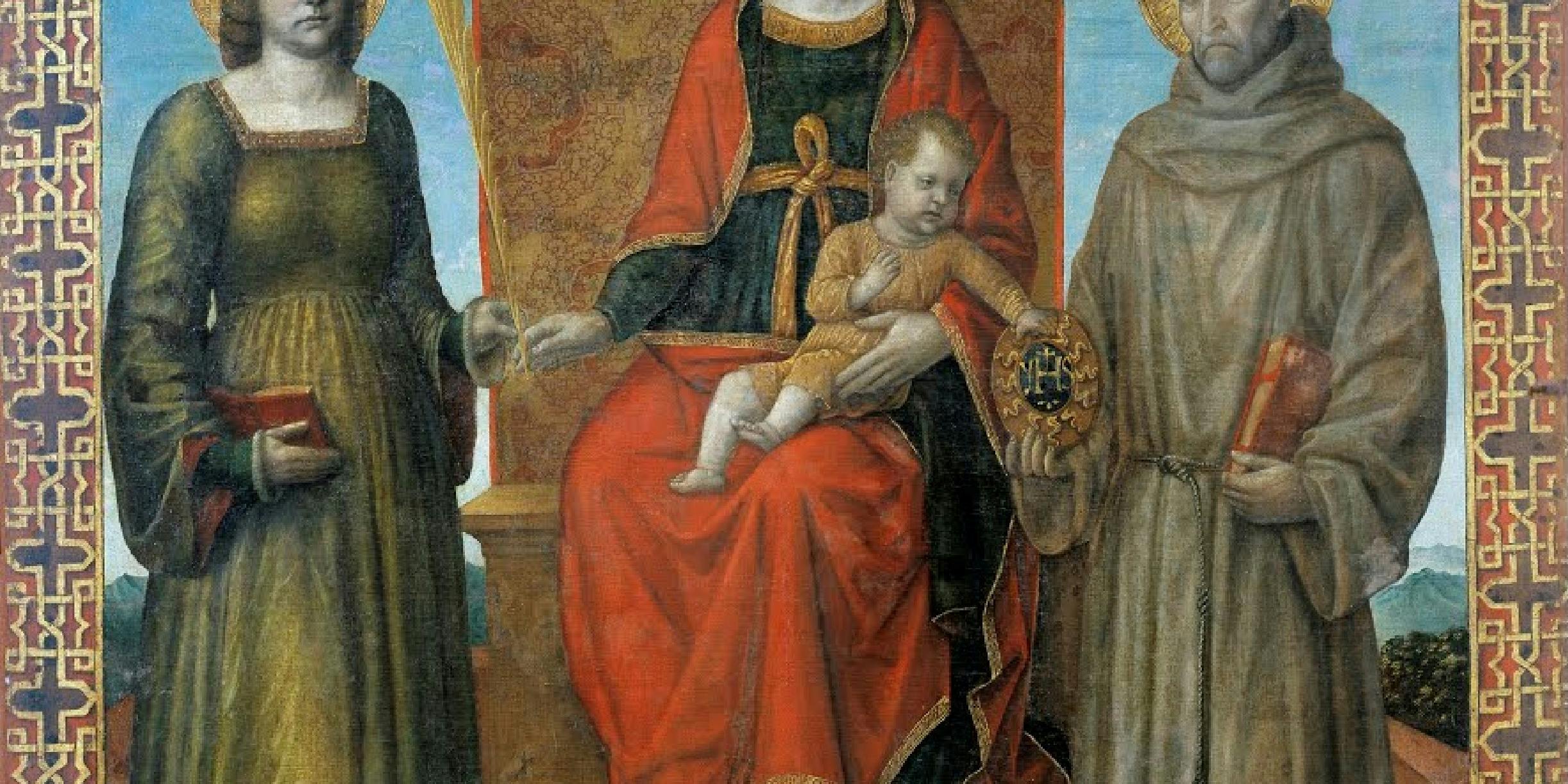
The interpretation of the clothing in the ‘Stendardo di Orzinuovi’
Preliminary interpretation
The Stendardo di Orzinuovi provides an authentic image of fashion in Lombardy in the first decade of the 16th century. In particular, it is an example of how clothing styles, in the Milan and Bergamo-Brescia area, were still influenced by a late style typical of the second half of the 15th century.
As we will see in the analysis of the individual garments, this is a feature that is also reflected in the terminology of the individual items of clothing, choice of fabrics and, even more so, in the construction of the silhouettes.
Female figures, still slender and elongated after the late Gothic style, with understated and carefully balanced colours and volumes, are contrasted by the highly contemporary male garments - Saint George first and foremost - that bear witness to a new emerging market in the Lombardy region: the production of armour.
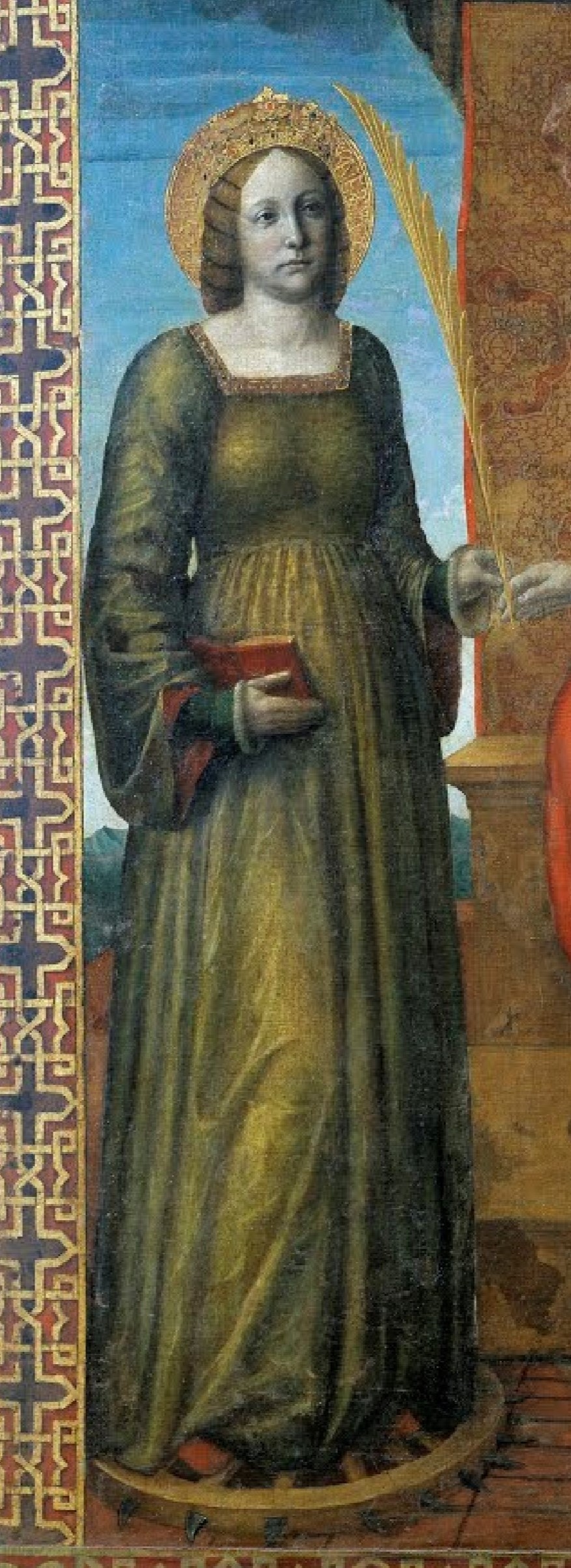
Saint Catherine of Alexandria
The saint’s attire features three layers of garments. The outermost layer was known as a CIOPPA (overcoat), termed as ROBA LARGA PER DI SOPRA (loose-fitting outer garment).
It was a voluminous, tapered coat with a close-fitting bodice, wide almost fan-shaped skirt, and loose sleeves. Here, the saint is wearing an overcoat made of green iridescent yellow silk, fully lined in a contrasting fabric that was either taffeta or Hormuz silk.
The wide rectangular neckline features an elegant decoration in the form of a REINFORCED APPLIED BAND. In this case, it is a tablet-woven band, applied to a leather backing on which bezel studs with gemstones are sewn, and used on the neckline of the overcoat as both a decoration and reinforcement.
A second garment, part of the VESTITI STRECTI PER DI SOTTO (close-fitting undergarments) can be seen underneath the wide sleeves of the overcoat. Available documentation, the volume of the sleeve and comparisons with other garments from the same period, all suggest that this is a GAMURRA, a commonly used garment, cinched at the waist, with a wide square neckline. These were usually detached from the bodice and the colour, or fabric of which they were made, would often be in contrast to the rest of the attire. Here, however, it is reasonable to assume that they are the same colour as all the clothing. The gamurra, made of green wool cloth, features a lambskin lining.
The last garment, not visible in the banner, would have been a CHEMISE made of linen and an important part of the overall attire. It was the only garment in direct contact with the skin.
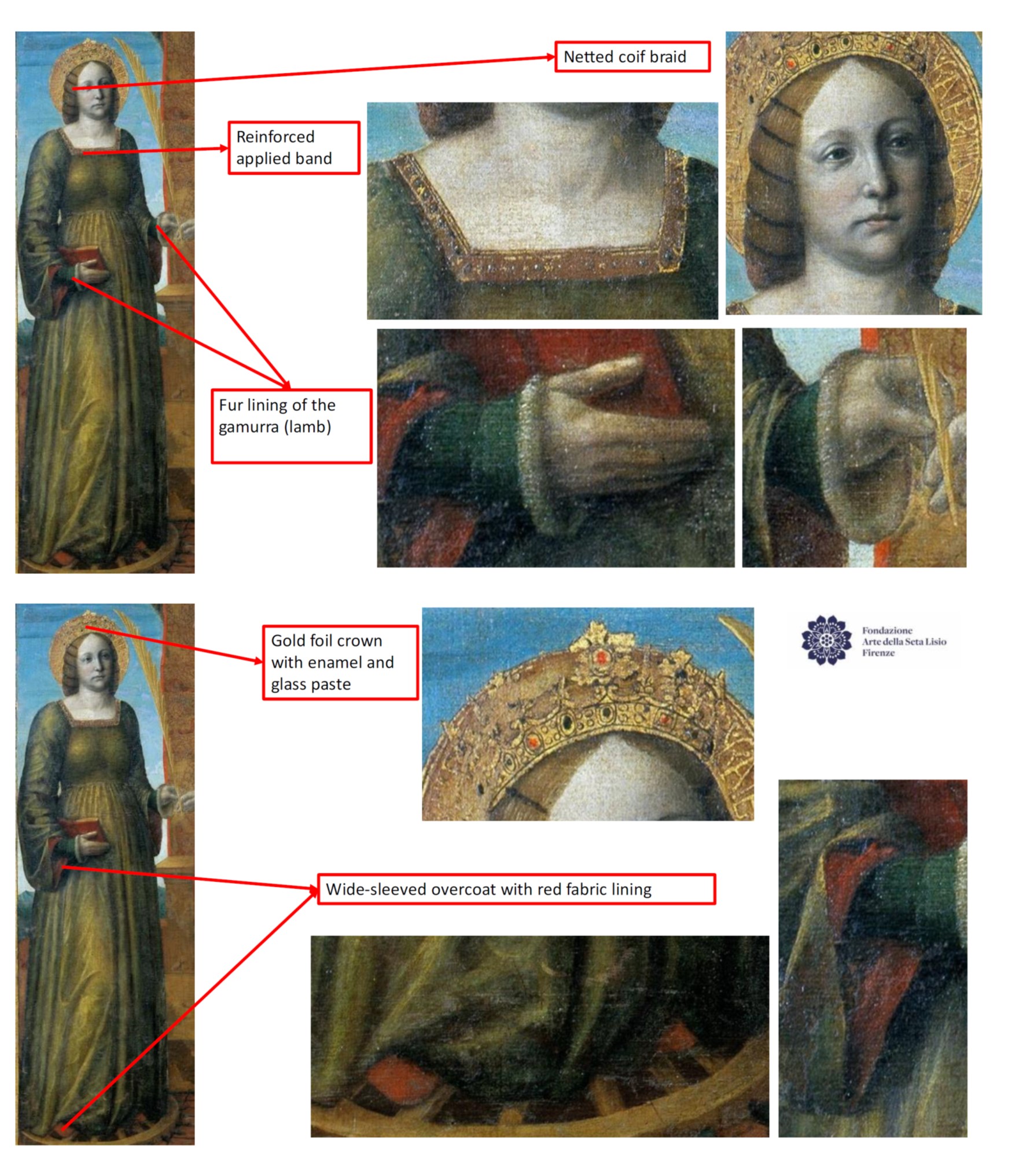
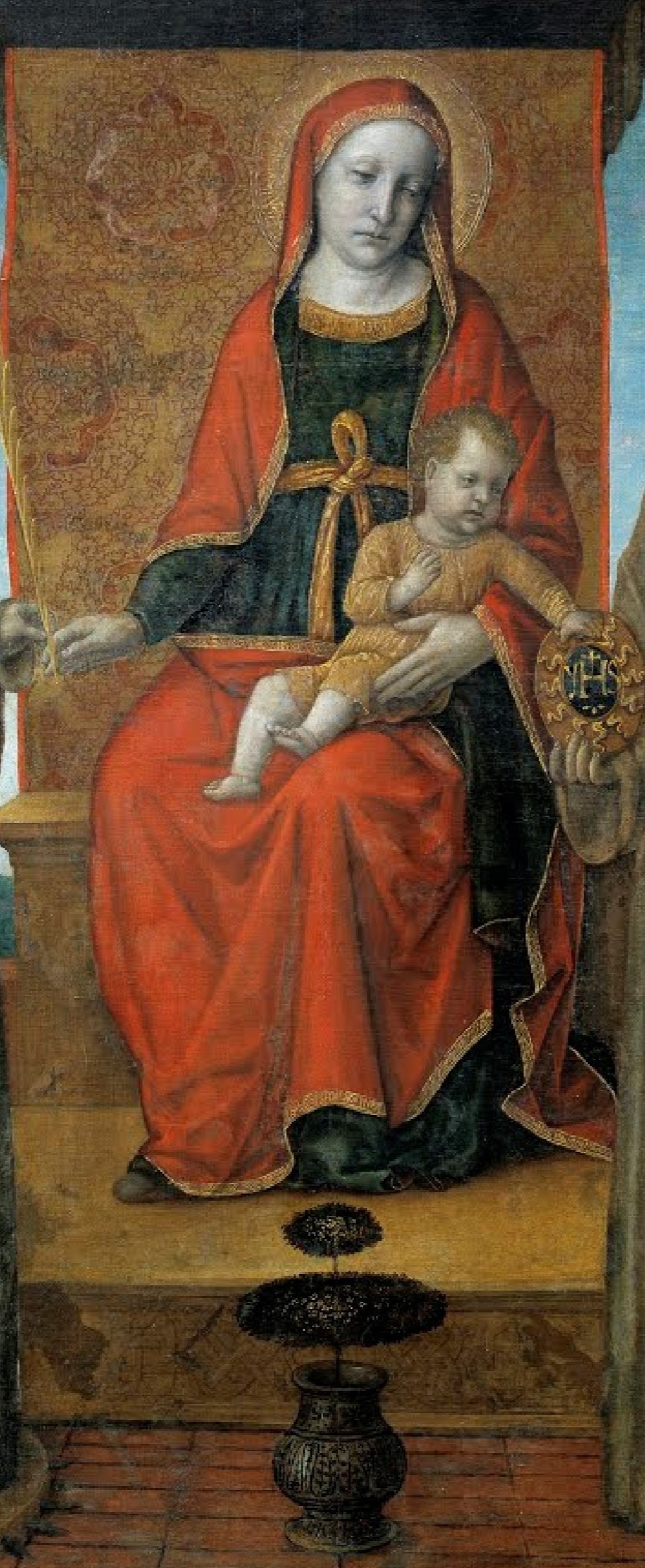
The Virgin Mary and Child
Contrary to what one would expect, the Virgin Mary is not wearing a patterned or ‘old-fashioned’ dress, as it would be defined towards the mid-16th century, but one that was commonly worn by women at the end of the 15th century.
The green gown is a GAMURRA made of green wool cloth, again lined with red taffeta or Hormuz silk. The round neckline is adorned with a REINFORCED APPLIED BAND in the form of a tablet-woven band.
There is a knotted GIRDLE around her waist. The figure is wrapped in a large red silk CLOAK, lined with green taffeta, featuring an elaborate gold trim. The two trims, one on the neckline and one around the edge of the cloak, feature writing in Kufic-inspired letters mixed with Greek and Latin characters, echoing an oriental style that was very much in vogue from the second half of the 15th century.
The tip of her shoe can be seen peeping out from under the voluminous folds of the gamurra. This is a PIANELLA BASSA, a sort of flat slip-on shoe made of soft leather with a rounded toe.
The child is wearing a fine CHEMISE; a shirt made of gold cloth that matches both the trims and the Virgin Mary’s girdle.
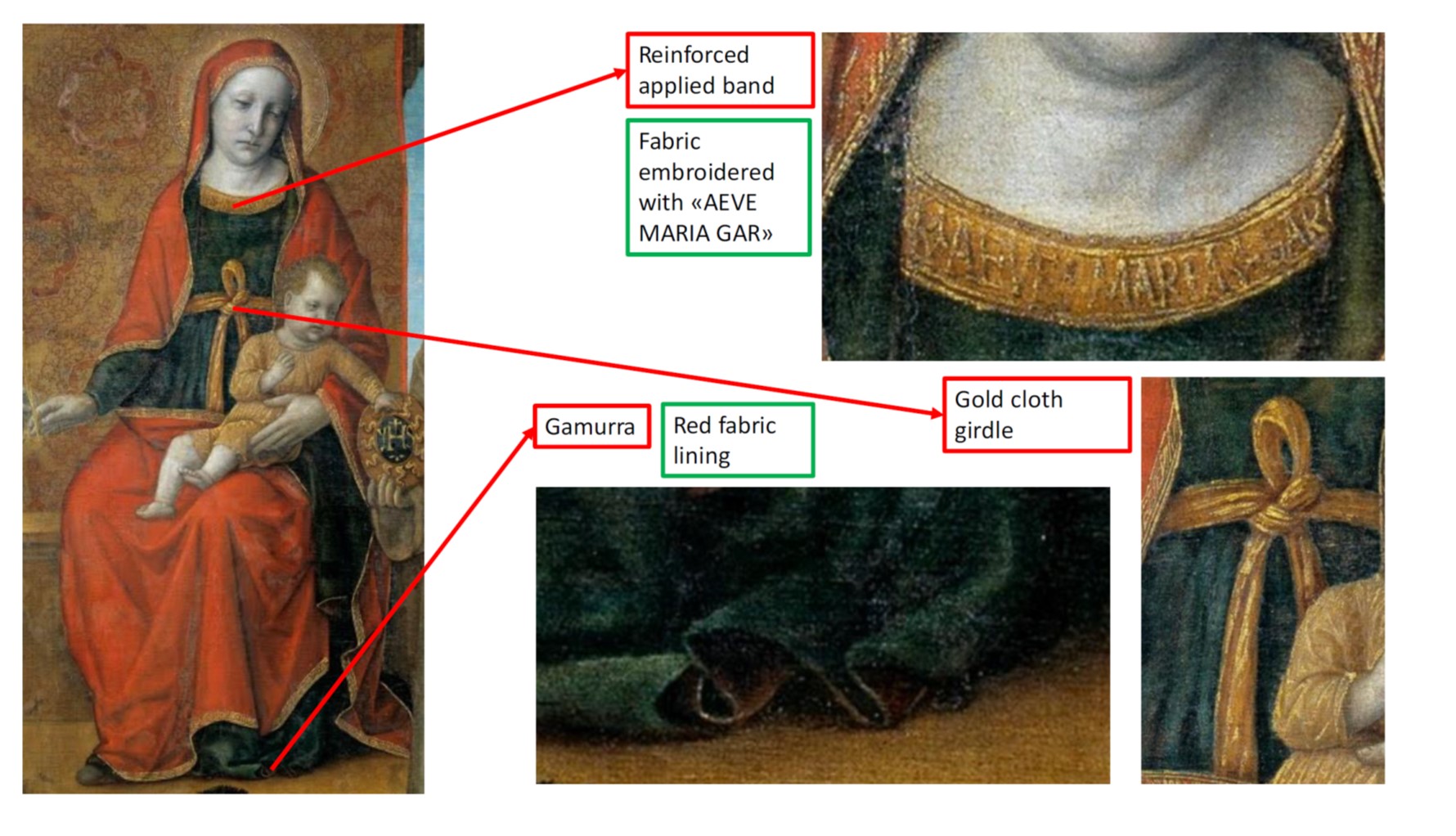
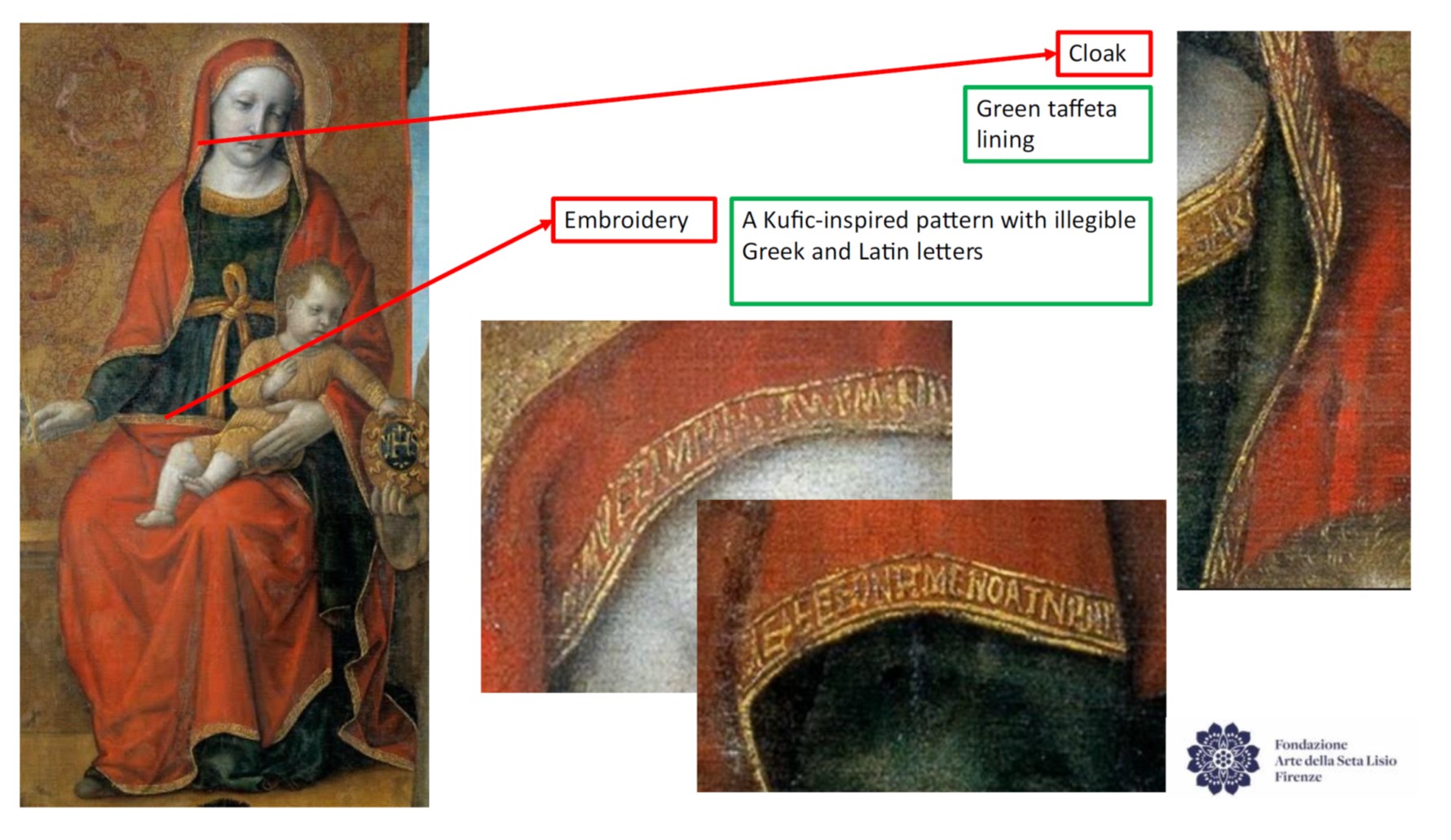
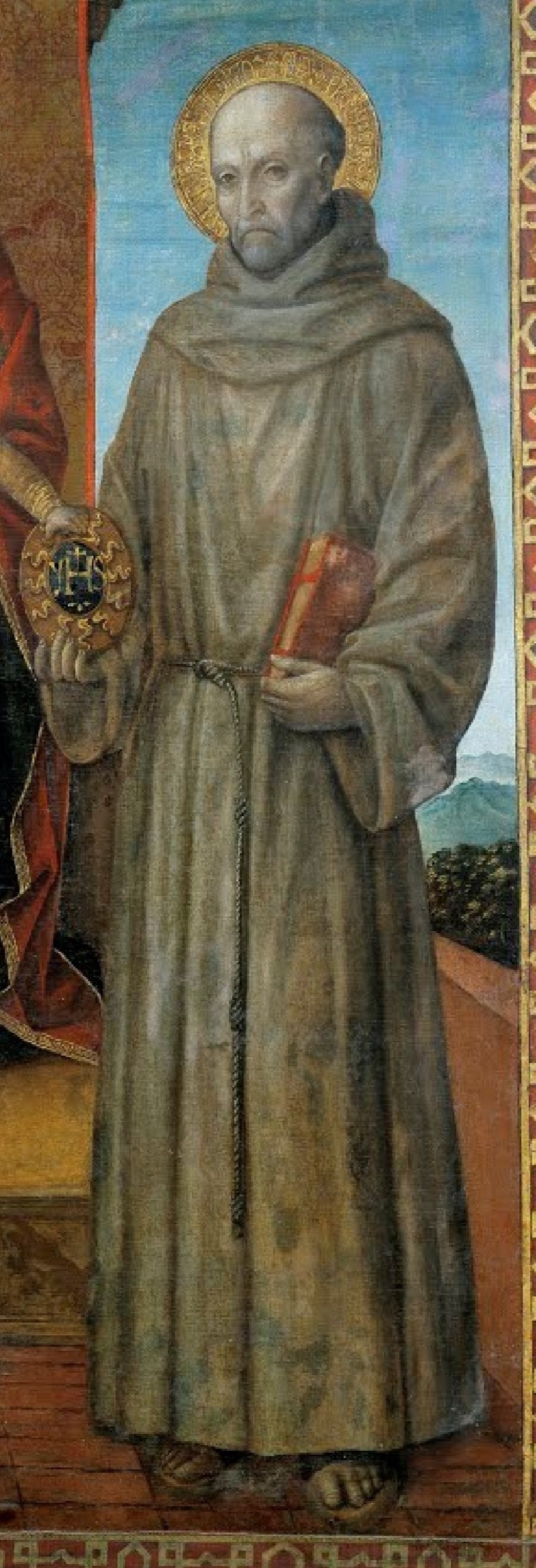
Saint Bernardino of Siena
The Franciscan saint is wearing a typical SAIO, also known as a TUNIC. The name ‘saio’ in Italian derives from the fabric with which the tunic was made, i.e. a wool twill woven in diagonal lines.
The garment consists of two elements: a large tunic with gussets and wide sleeves; and a hood that is separate from the main garment.
A rope-like cord, known as a GIRDLE, is also featured that recalls the symbolism of the principles of the Order of Friars Minor.
He is wearing simple wooden SANDALS with a leather strap on the top.
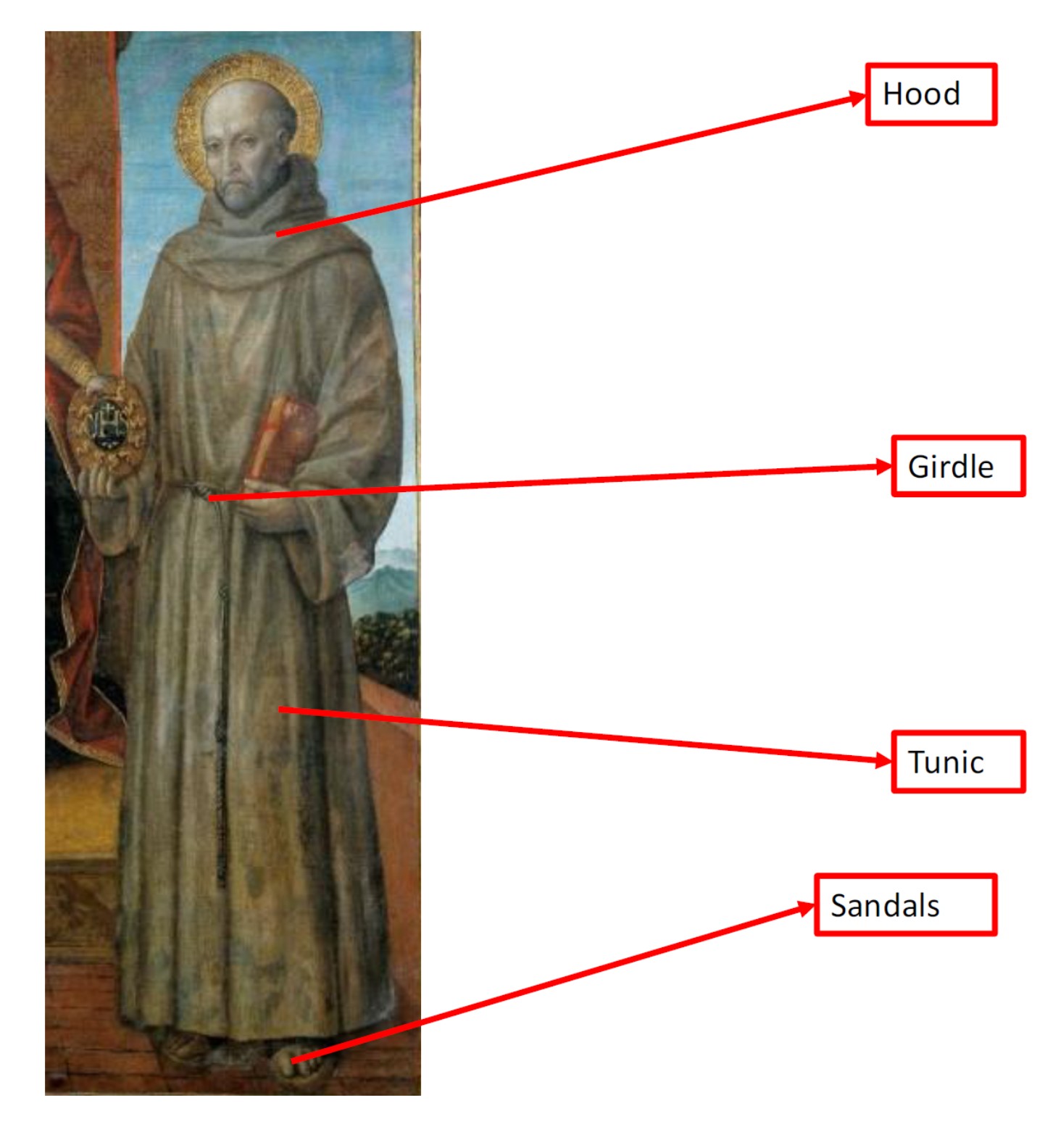
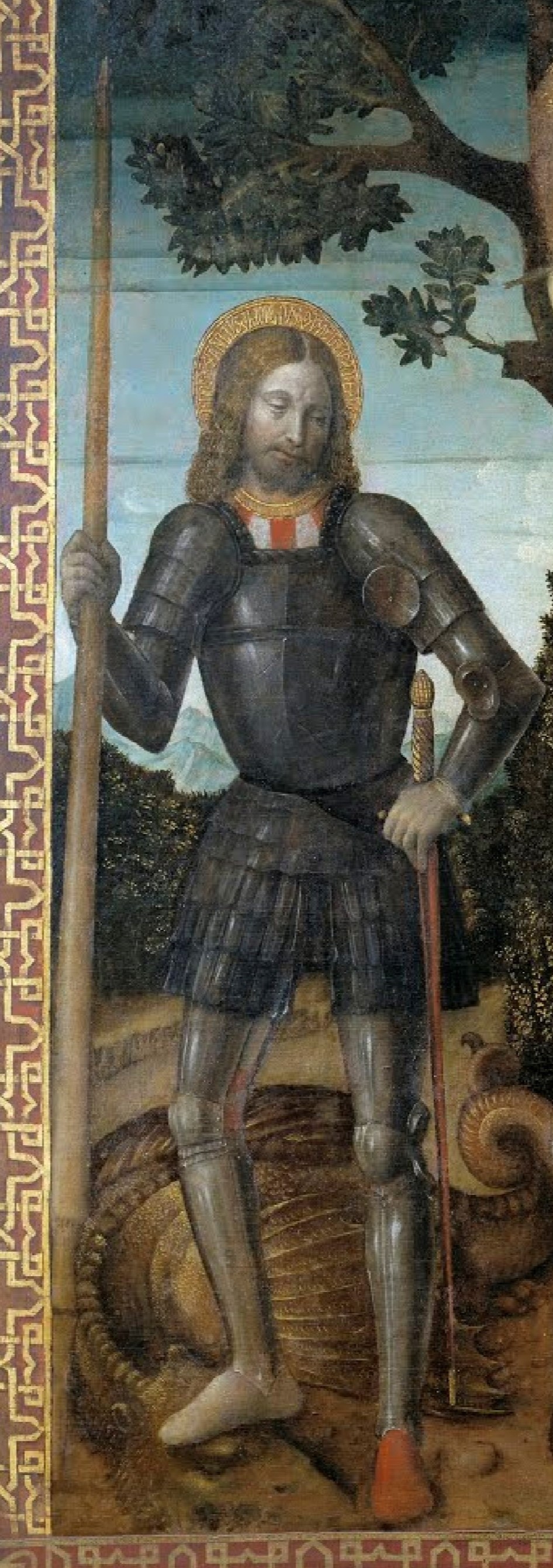
Saint George
Interpreting Saint George’s attire is no easy task and does not come under the expertise of a standard costume historian. It requires the specialist knowledge of a hoplologist to provide the specific terminology, dating and insight into the production of the arms and armour.
The armour consists of a JOUSTING CORSET with a PLACKART on the chest, and elements called a FAULD AND TASSETS covering the area from the hips to mid-thigh. The arms are protected by VAMBRACES WITH PAULDRONS where a RONDEL can be seen on the left arm, and a SMALL SHIELD in the crook between the arm and forearm. The legs are covered by GREAVES with no foot protection.
The lack of a gorget at the neckline - an element that fitted into the helmet which is also absent in Foppa’s banner - and the opening on the back of the greaves, provide a glimpse of the items of clothing beneath, both part of the VESTI STRECTE PER DI SOTTO (close-fitting undergarments).
He is wearing a DOUBLET or JACKET, made of two-colour, mi-parte wool cloth. This garment was padded on the chest and had a front opening. The round neckline is adorned with a gold trim. It is interesting to note, from a tailoring point of view, how Foppa does not depict any basic elements, such as the front buttoning, for example.
Saint George is wearing wool HOSE on his legs. This also showcases the use of two-colour mi-parte: the left leg is red while the right is white.
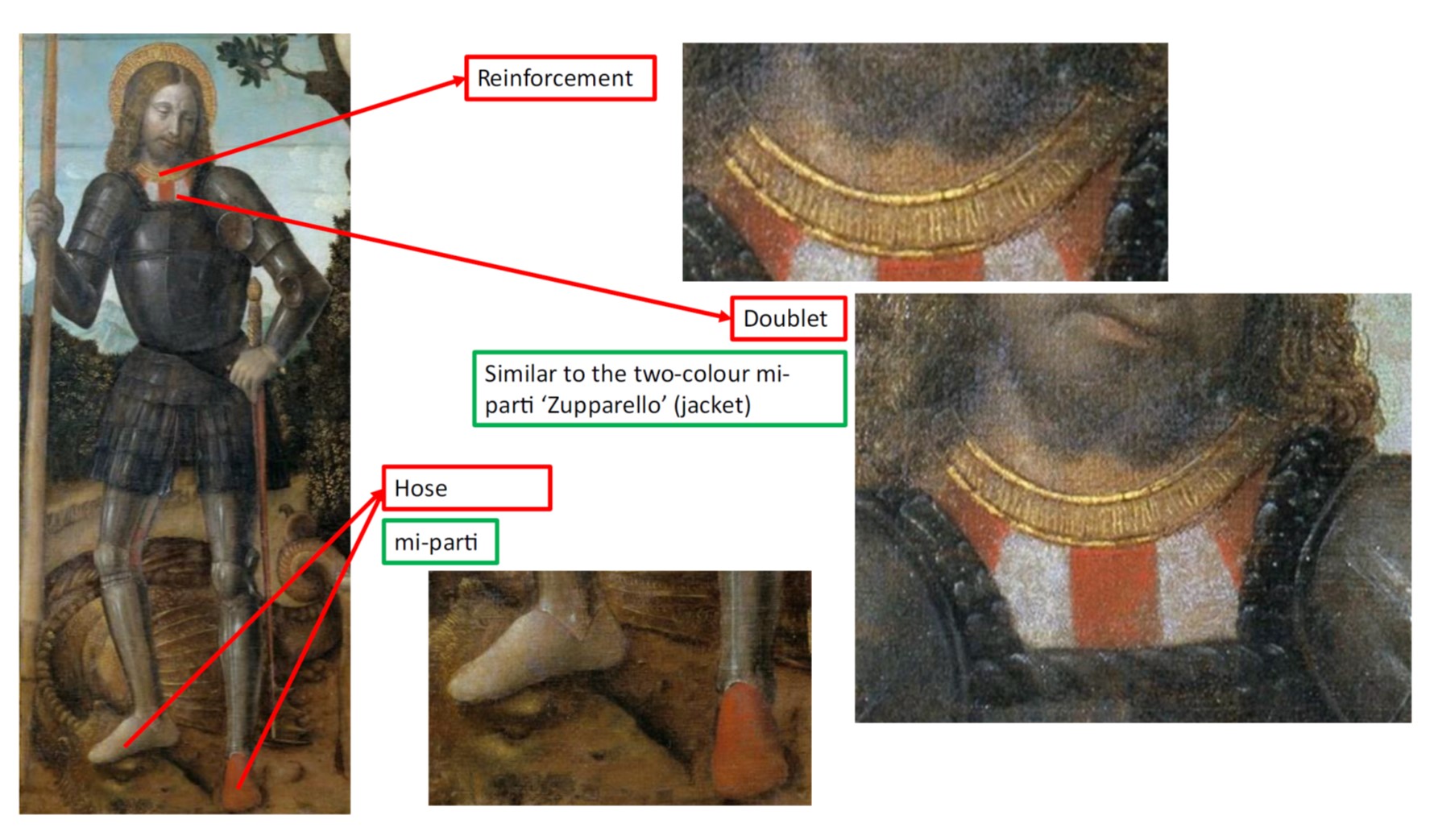

Saint Sebastian
Saint Sebastian is naked except for one single item of clothing: a thin white linen cloth that conceals a LOIN CLOTH beneath it. This is a precursor to the male undergarments that would become more prevalent from the last quarter of the 15th century onwards.
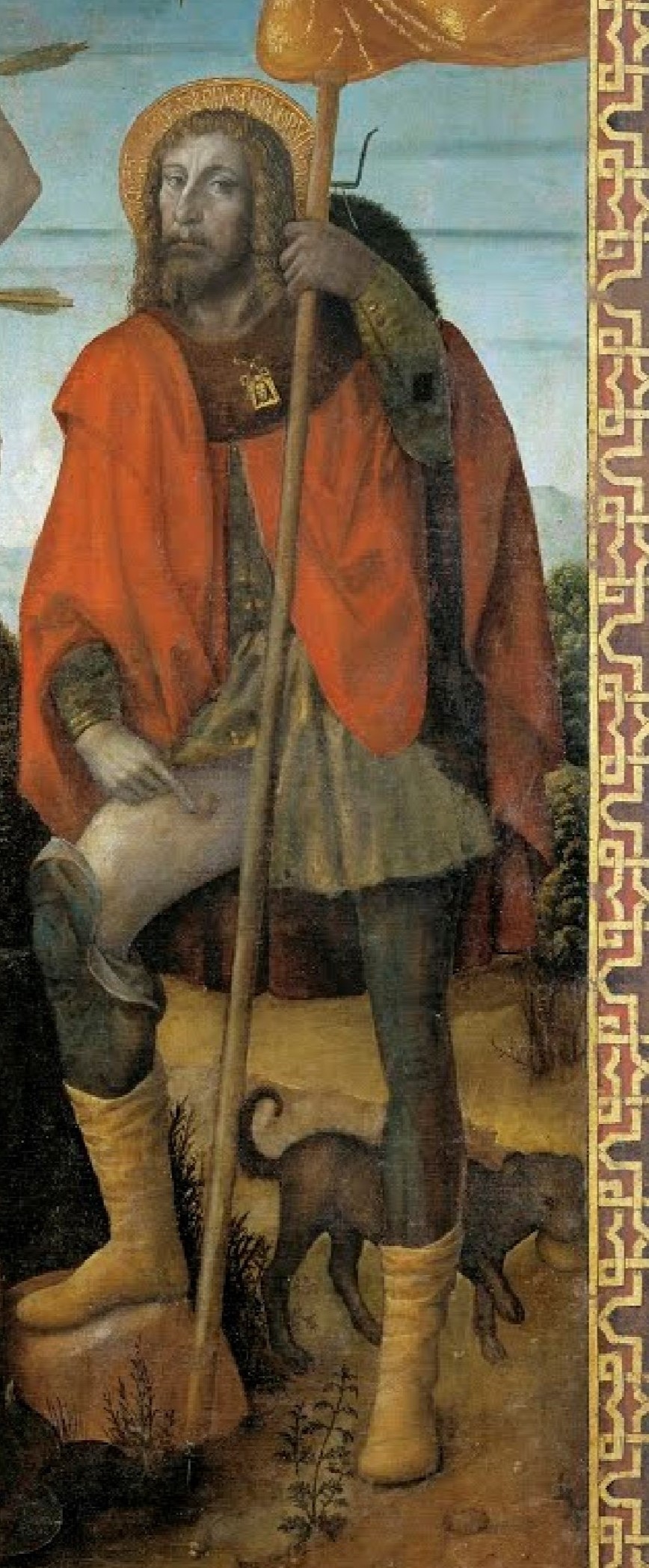
Saint Roch
Saint Roch is dressed according to the iconography that had already been established in the 15th century. The characteristic STAFF together with the felt HAT, wool CAPE embellished with the so-called ‘Veronica’ brooch on the TABARD, are complemented by elements that, here again, are more akin to the fashion of the late 15th century.
He is wearing a TUNIC or COTEHARDIE made of green wool cloth lined with linen, close-fitting on the chest, and flared to mid-thigh in length. It features buttons down the front and on the sleeves. The cuff is embellished with an indistinct decoration, possibly embroidery.
The raised edge of the tunic gives a glimpse of the white linen CHEMISE underneath.
His legs are covered by green wool HOSE, lined with linen, complete with soft ochre-coloured boots known as BORZACCHINI in Lombardy.
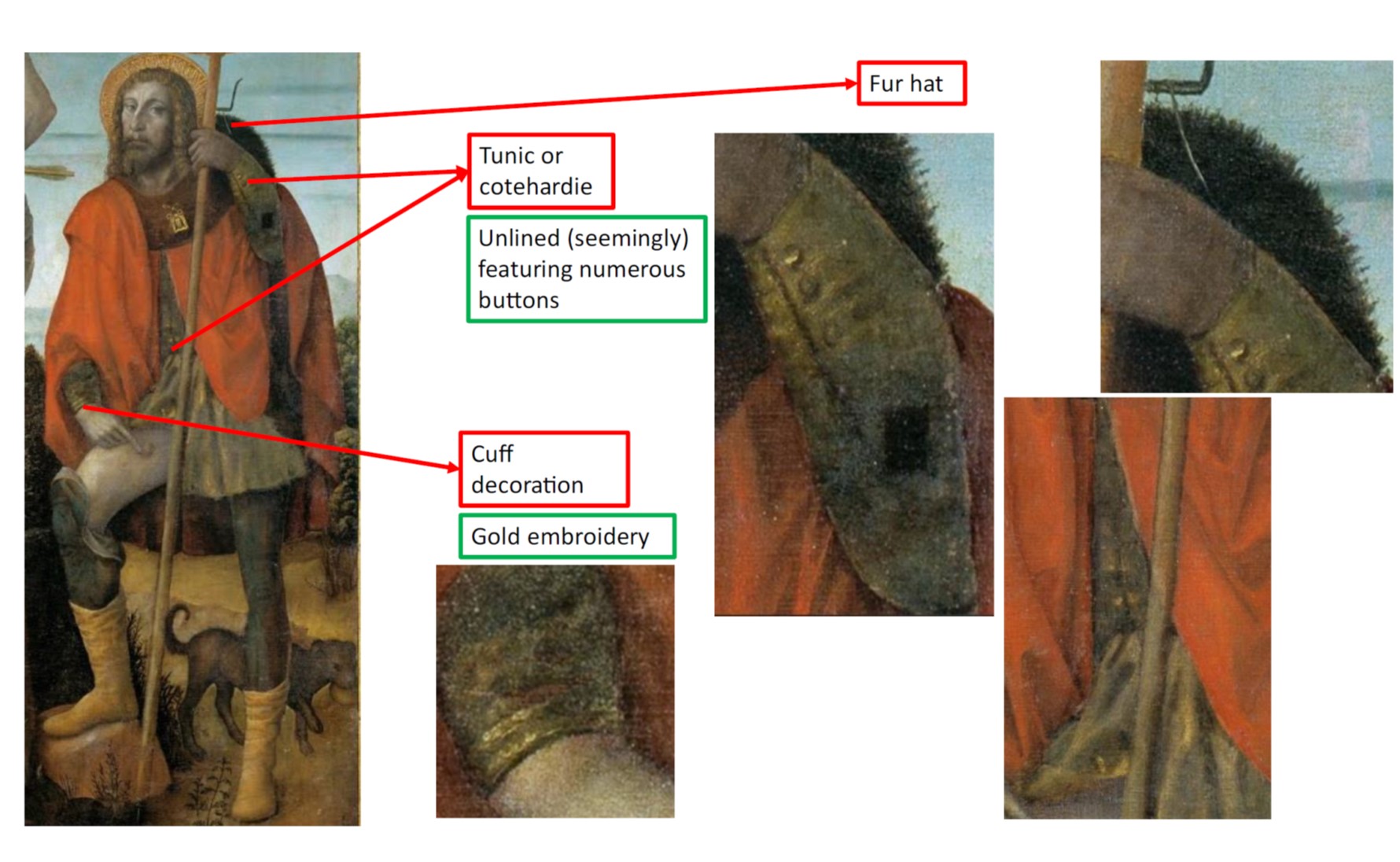
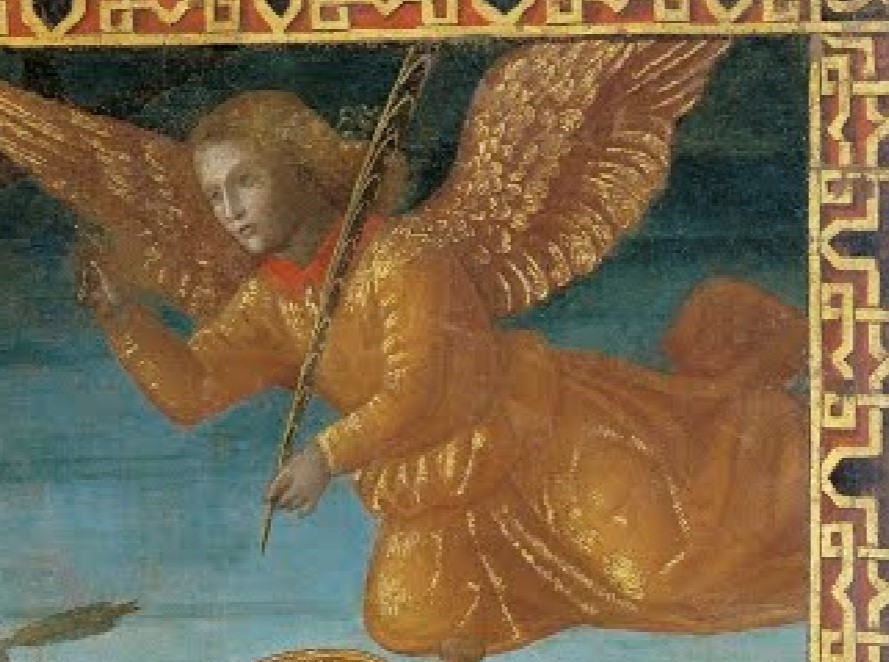
Angel
Even the angel is wearing a specific garment. This is a GUARNELLO, a robe made of gold cloth with a red silk lining visible at the neckline. The ‘guarnello’ was originally made of a very fine, lightweight fabric which, during the 15th century, became a simple, lightweight, full-length garment, tucked at the waist, which would be used to clothe angels in the Renaissance.